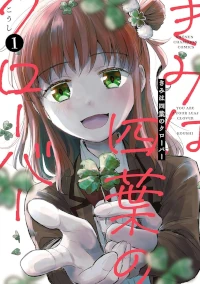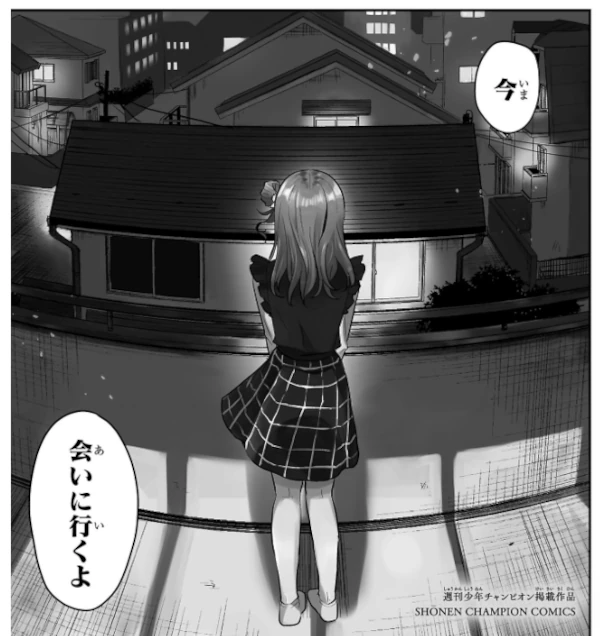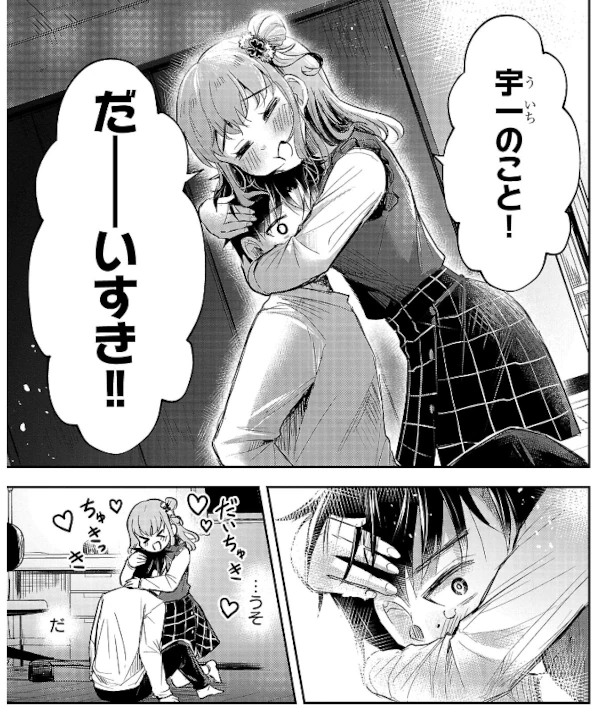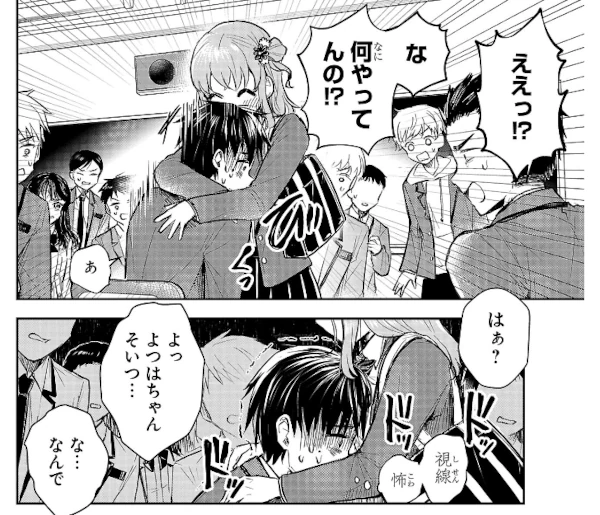This time, we’re introducing Kimi wa Yotsuba no Clover—a page-turning mix of romance, revenge, and fate that’s ideal for learners who want to see both affectionate and intense Japanese in action.
Work Information

Kimi wa Yotsuba no Clover(きみは四葉のクローバー)
Author: Koushi
Publisher: Akita Publishing
Amount of text: moderate
Challenge level: ★★
Latest volume : Vol.5(Aug.2025 / Ongoing)
Story overview
Uichi’s life once brimmed with popularity—but everything changed in an instant. Even so, he kept going, clinging to a childhood promise with his first love, Yotsuha, who transferred schools long ago: “We’ll both become veterinarians.”
Just as Uichi’s strength is about to give out, Yotsuha suddenly appears before him, unchanged from the girl he remembers—except for the quiet determination glimmering in her eyes. What truth does she carry, and what is her real purpose? A love-suspense mystery where the lucky charm of a four-leaf clover may turn fate against them!
The Appeal of This Manga
In the midst of a cruel home and school life, Uichi faces despair—until his childhood friend Yotsuha reappears. Her boundless cheer and unwavering loyalty turn Uichi’s world upside down, shielding him from those who would hurt him. Yet Yotsuha herself hides secrets she cannot share…

This series masterfully combines several popular elements—over-the-top “baka couple” romance, cathartic zamaa (just desserts) moments, and intense tales of misfortune—making it nearly impossible to put down.
Why this manga is suitable for learning Japanese
This manga is not only entertaining but also highly recommended for Japanese learners for several reasons.
Examples of Lovey-Dovey “Baka Couple”(バカップル) Dialogue
Yotsuha is always upbeat and high-energy, expressing her love for Uichi in a completely straightforward way. Throughout the series, you’ll find plenty of scenes that showcase this over-the-top, “baka couple” (バカップル) style of affection. While a bit exaggerated, these are excellent examples of how Japanese teens openly express their feelings—and they can be very helpful reference material for beginning learners of Japanese.

Learning harsh or cruel expressions
This manga also features numerous examples of harsh, even brutal Japanese. Of course, learners shouldn’t imitate these phrases in daily life, but they’re invaluable for broadening comprehension and fully enjoying fiction that uses darker language.

Culture Spotlight
“Baka Couple”: A Loaded Term for Lovebirds in Japanバカップル

In Japan, public displays of affection (PDA) have long been frowned upon. Many people still feel that kissing, hugging, or even holding hands too openly is mendokusai (embarrassing or improper). Within this cultural backdrop, the term バカップル (baka kappuru, “stupid couple”) emerged as a way to mock couples who are “too lovey-dovey in public.”
The word itself is a playful mashup of バカ (baka, “foolish” or “stupid”) and カップル (kappuru, “couple”), giving it a pun-like, slightly comical ring even when it’s used critically.
From Mockery to Mild Affection
Originally, バカップル was purely derogatory—implying “shameless” or “cringe” behavior. Seeing a couple clinging to each other at a train station might prompt someone to mutter:
「あの二人、バカップルだな。」
“Those two are such a baka couple.”
However, in recent years, attitudes have softened. While the term still carries sarcasm, it’s also sometimes used playfully or even warmly, acknowledging a couple’s closeness with a smile rather than disapproval. In other words, バカップル has become multifaceted: both an insult and a slightly envious compliment.
バカップル in Everyday Conversation
Here are some natural examples of how the word might appear:
・When teasing friends(友達同士で冷やかすとき):
「お前ら、完全にバカップルじゃん!」
“You two are totally a baka couple!”
・When watching with mild exasperation(少し呆れながら観察するとき):
「見て、あの二人、またイチャイチャしてる。バカップルだなぁ。」
“Look, they’re all over each other again. Such a baka couple.”
バカップル in Fiction
Manga, anime, and dramas frequently feature “baka couple” characters: pairs who are so openly affectionate it borders on absurd. Sometimes they’re comic relief, sometimes they’re shown as idealized sweethearts who don’t care what others think.
This raises an interesting cultural question: Did fiction create the image, or did it simply reflect reality? It’s likely a mix of both. As these characters gained popularity, audiences grew more accustomed to overt displays of affection—even if mostly in fictional settings.
What It Means for Learners
For Japanese learners, バカップル is more than slang—it’s a window into shifting cultural values around love, privacy, and self-expression. Understanding this term helps you:
・Recognize when affection is considered “too much” in Japanese society.
・Catch playful teasing or sarcasm in real-life conversations.
・Understand why manga and anime often exaggerate romantic behavior for humor or charm.
Whether you view them with envy or eye-rolling amusement, バカップル are a small but telling sign of how modern Japan balances traditional reserve with a growing openness toward love in public.
A Little Warning
Graphic and Disturbing Content
Due to the nature of the story, the manga contains many emotionally intense and unsettling scenes. If you’re sensitive to cruel or disturbing themes, this may not be the right title for you.

Work Information

Kimi wa Yotsuba no Clover(きみは四葉のクローバー)
Author: Koushi
Publisher: Akita Publishing
Amount of text: moderate
Challenge level: ★★
Latest volume : Vol.5(Aug.2025 / Ongoing)
Here’s a safe and convenient way to purchase Japanese manga.
This Blog’s ConceptIn this blog, we are introducing manga that are not only highly captivating but also ideal for Japanese language learners. Studying Japanese through manga is both fun and effective. Manga allows you to understand the subtleties of keigo (honorifics), teineigo (polite speech), and casual conversation in Japanese. We hope you find works that match your interests and use them to enhance your Japanese learning journey.